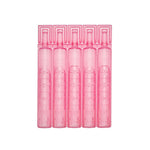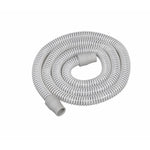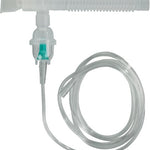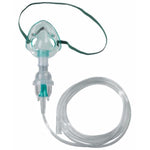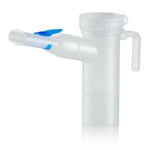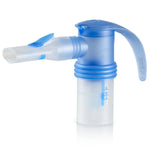You have no items in your shopping cart.
COPD is a progressive lung disease that can cause the airways to lose their elasticity. Symptoms may include shortness of breath, fatigue and wheezing. Increased mucus production and frequent lung infections are also common. Currently, there is no cure for COPD, but there are ways to manage the condition and improve your quality of life. One treatment, which may decrease symptoms of COPD (chronic obstructive pulmonary disease), is breathing medications via a nebulizer.

The nebulizer turns a liquid medication into a fine mist. During a breathing treatment, the mist is inhaled into the lungs. Medications used in a nebulizer for COPD include fast-acting bronchodilators, which relax the airways. Additional medications used may include:
- Antibiotics
- Corticosteroids
- Anticholinergic medications
Benefits of Nebulizers Over Inhalers for COPD (chronic obstructive pulmonary disease)
Although inhalers can also be used to deliver medication to the lungs, nebulizers offer several advantages. For example, a nebulizer makes it easier to take the correct dosage of medication. If you use an inhaler, your technique may affect how much medication gets delivered to your airways.
Not everyone can use an inhaler correctly. It can be especially difficult for very young children, the elderly or those with a cognitive impairment to coordinate using an inhaler. Using a nebulizer allows for a passive treatment, which a family member can setup if needed. A nebulized treatment also often works more effectivity if an individual has significant wheezing or shortness of breath.
Taking Your Nebulizer Breathing Treatments Correctly
COPD is a progressive lung disease that can cause the airways to lose their elasticity. Symptoms may include shortness of breath, fatigue and wheezing. Increased mucus production and frequent lung infections are also common. Currently, there is no cure for COPD, but there are ways to manage the condition and improve your quality of life. One treatment, which may decrease symptoms of COPD (chronic obstructive pulmonary disease), is breathing medications via a nebulizer.

The nebulizer turns a liquid medication into a fine mist. During a breathing treatment, the mist is inhaled into the lungs. Medications used in a nebulizer for COPD include fast-acting bronchodilators, which relax the airways. Additional medications used may include:
- Antibiotics
- Corticosteroids
- Anticholinergic medications
Benefits of Nebulizers Over Inhalers for COPD (chronic obstructive pulmonary disease)
Although inhalers can also be used to deliver medication to the lungs, nebulizers offer several advantages. For example, a nebulizer makes it easier to take the correct dosage of medication. If you use an inhaler, your technique may affect how much medication gets delivered to your airways.
Not everyone can use an inhaler correctly. It can be especially difficult for very young children, the elderly or those with a cognitive impairment to coordinate using an inhaler. Using a nebulizer allows for a passive treatment, which a family member can setup if needed. A nebulized treatment also often works more effectivity if an individual has significant wheezing or shortness of breath.
Taking Your Nebulizer Breathing Treatments Correctly


